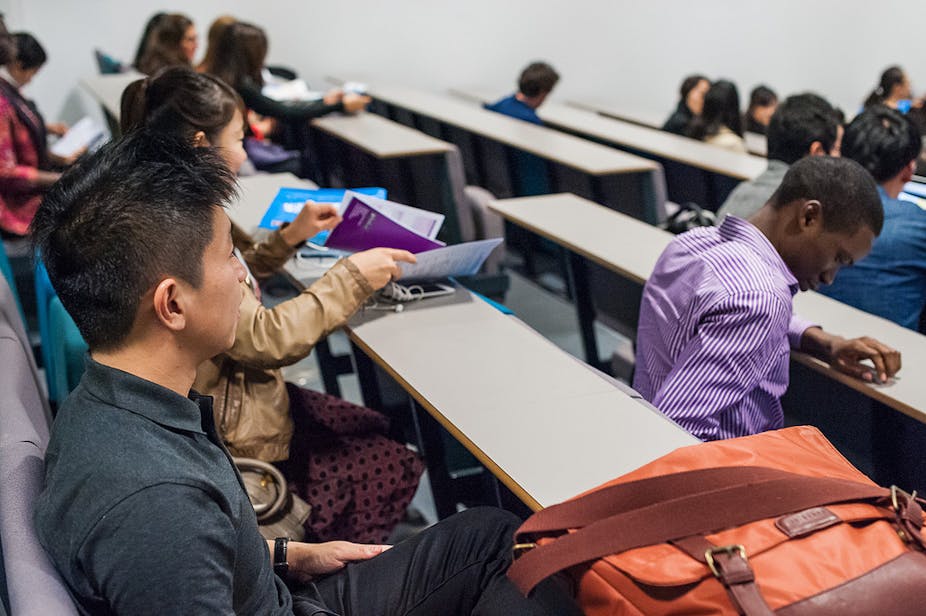Sweeping changes to the way student visas are allocated have been recommended by the House of Lords science and technology select committee. It is the sixth time the government has been given such steers on the issue by a parliamentary committee.
The latest report has recommended the reinstatement of the previous post-study work student visa regime, a streamlining of the applications process, removing students from net migration targets, more attention to international perceptions and more policy stability.
These recommendations come at a time when evidence is emerging that the Home Office policy on student visas may be having a significant effect on international student numbers. New figures showing that there has been a decline in the number of international students coming to the UK for the first time in 29 years have been picked up around the world.
The trends indicated in Global Demand for English Higher Education, published by the Higher Education Funding Council for England (HEFCE) in April 2014, have attracted attention closer to home too. In the current tight funding environment for universities, the impact of this drop in international students on university finances will worry funding councils throughout the UK.
The decline certainly coincides with the advent of the coalition government, and it isn’t difficult to see what appear to be some clear correlations, even if it is difficult to prove cause. It would be perverse not to associate the 24% decline in undergraduate applications from the European Union that happened in 2012 – after seven years of steady growth averaging around 5% per year – with the introduction of much higher student fees.
But EU students do have access to similar tuition fee loan arrangements as UK students. It’s not impossible to project that as they begin to understand they are not paying an up-front fee so much as incurring a defined, income-contingent future tax liability, the numbers might begin to mount again – if the system continues to exist in its present form.
The bigger focus, certainly for universities, is likely to be on the trend in international student enrolment from outside the EU. Here the picture is surprisingly mixed, given the much less favourable visa regime that international applicants now have to brave.
Undergraduate enrolments have continued to rise, albeit more slowly than in the past. Double-digit growth figures between 2008 and 2011 have fallen back to 1% and 2% in 2011-13, coinciding with the new regime.
More worrying is postgraduate enrolment for students from outside the EU. Here we have seen a decline of 1% per year from 2011 to 2013, again on the back of very strong growth over the previous few years: as much as 20% in 2008-9 and 8% as recently as 2010-11.
Postgraduate numbers are substantially higher than for undergraduate: just over 70,000 postgraduates from outside the EU, versus just over 50,000 undergraduates, so these drops are significant. The problem is that we have seen declines in home post-graduate enrolment too, probably linked to lack of funding. This is creating a real problem for the UK.

The UK’s knowledge economy requires not just a substantial proportion of the population to be university educated, but also much greater numbers of those to have a higher degree. Some postgraduate programmes – notably in engineering and computing – would be unviable without international students. The strategic implications of this are problematic, because these are the very areas in which employers say there is a particular skills shortage.
The broader economic implications of the decline in international student enrolment are serious too. A Universities UK report entitled The Impact of Universities on the UK Economy, also published in April 2014, has estimated the impact of all non-UK student personal off-campus expenditure at £4.91 billion in 2011-12. The knock-on output generated throughout the UK economy comes to some £7.37 billion, while knock-on employment generated amounts to 62,383 jobs.
If we look at the total economic impact generated by non-EU students on and off campus, the total output comes to £13.9 billion, while the contribution to GDP is £7.3 billion. These are staggering sums of which the Treasury should (and does) take note.
Losing ground
But there are wider implications even than this. Anybody who has travelled abroad on behalf of their university knows that UK higher education is held in great affection and esteem throughout the world.
People of influence, up to and including heads of state, have studied in the UK, sometimes many years ago, and continue to be supportive to this day. The role of universities in creating “soft power”– networks of UK-friendly opinion-formers and influencers – is critical, and once eroded, can be difficult to recreate. This is all happening against a background where the competition is not idle.
Australia, the US and above all Canada have recently made their own visa regimes for international students much more attractive. Students from round the world who choose Canada as a study destination know that they will be able to work in the country once they have graduated for up to 3 years, and might have the option of staying even longer.
Their equivalents in the UK have only four months to find a job that will pay more than £20,300 and then can only stay for two years.
While it’s true that there is no cap on international student visas, and there is much support within government for the universities’ desire to recruit more of them, the latest figures from HEFCE lend weight to the suspicion that the changes in the visa regime that have taken place in the UK since 2010 are now taking their toll.

